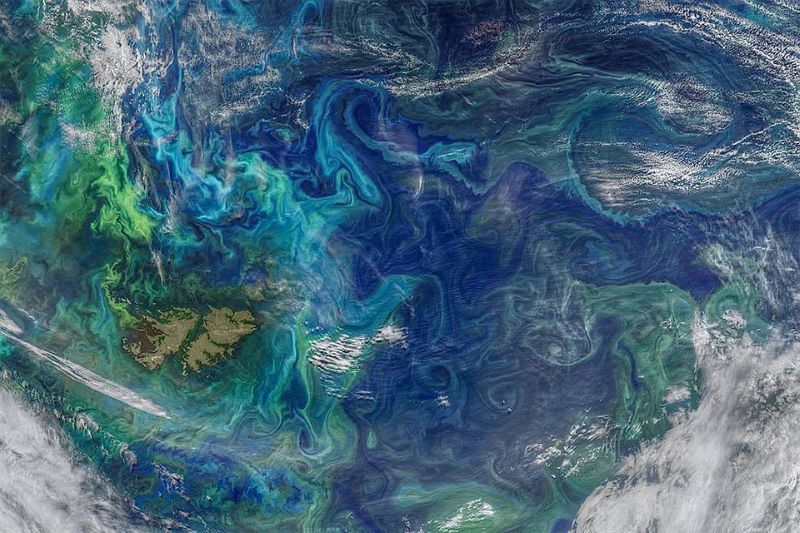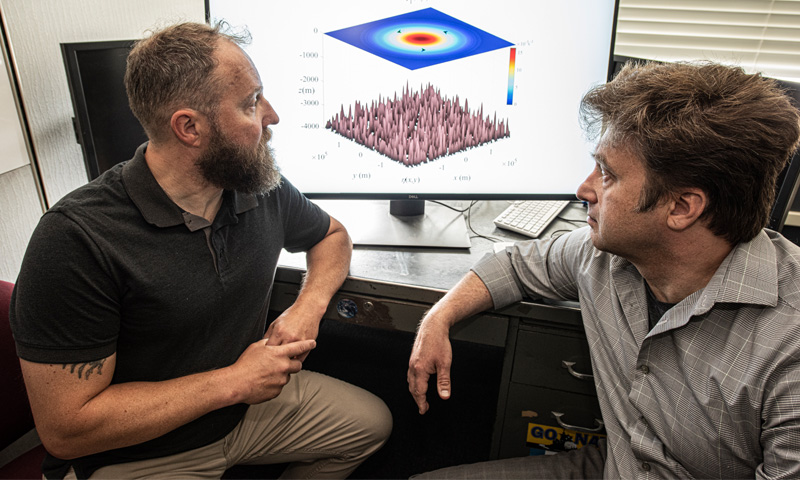
Oceans rings and the sandpaper effect
Oceans cover more than 70% of Earth’s surface. But there’s much we still don’t know about these vast watery stretches of our planet. This month (June 3, 2022), researchers at the Naval Postgraduate School in Monterey, California, announced new insights into the mystery of how ocean rings, or eddies – like those seen in this video – stay stable for long periods of time. They said the answer lies in the shape of the seafloor: its topography. That’s despite the fact that the average depth of the ocean – from seafloor to surface – is 2.3 miles (3.7 km)!
The researchers – doctoral student Larry Gulliver and professor Timour Radko – said small-scale texture on the seafloor slows down deep ocean currents, improving the stability and longevity of the eddies all the way at the surface. They call this the sandpaper effect. Just as small abrasive particles can grind down larger objects – like sandpaper does on a block of wood – so can these small features on the ocean floor affect portions of the vast ocean above it.
Their discovery, published March 9, 2022, landed them on the cover of the March 2022 issue of the peer-reviewed journal Geophysical Research Letters. This was Gulliver’s first paper as a lead author. Radko said of Gulliver that he did it:
… on his first try. It’s like getting on the cover of Rolling Stone … You’re a rockstar.
Want to see ocean rings in action? Don’t miss this beautiful video. It’s called Perpetual Ocean.

What are ocean rings?
Ocean rings, or eddies, are circular swirls of currents that can be a couple of miles or kilometers wide. These rings can persist in the same location from months to years. Ocean rings are vital for transporting heat and nutrients throughout the ocean. These circular features can create their own weather, generate wave patterns and even impact acoustics.
While scientists have long searched for how large vortices can be stable for long periods, previous searches disregarded ocean floor topography because they thought it was too far away to make a difference. Theoreticians don’t look at topography when considering activity on the ocean’s surface. Radko said this new finding has him questioning everything:
If this small-scale topography affects this vortex, it may affect currents, waves, and what not. I’m becoming skeptical of everything that assumes the bottom is smooth.
Piggy-backing on previous ocean ring research
With an assumption of a smooth seafloor, the physics suggests that ocean rings should dissipate after a few weeks. Old studies on ocean rings didn’t account for the sandpaper effect. Radko and Gulliver made their model as accurate to the topography as possible. Using data from echo-sounding, or sonar systems, they made their model represent a rough bottom that mathematically represents an average seafloor. Gulliver said:
We borrowed this, borrowed that, borrowed the other idea, put it together and it worked! It was pretty quick, [but] I had to run a few more simulations to make sure.
“Pretty quick” in researcher-speak equaled about four years of studying, modeling and collaboration. Their discovery will help other researchers and the Navy’s meteorology and oceanography community provide critical information to others. Radko is planning to look at how the Navy’s Hybrid Coordinate Ocean Model represents eddies. He hopes their new discovery helps improve the accuracy of the model. As Radko said:
Let’s get to the bottom of it.
Bottom line: Researchers discovered that the mystery of why ocean rings persist is due to the texture of the seafloor below the eddy.
Source: Topographic Stabilization of Ocean Rings
Read more: The deep ocean is warming as climate warms
The post Ocean rings’ mystery stems from shape of seafloor first appeared on EarthSky.
0 Commentaires